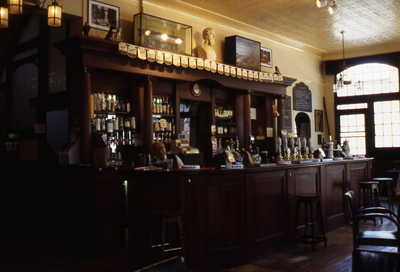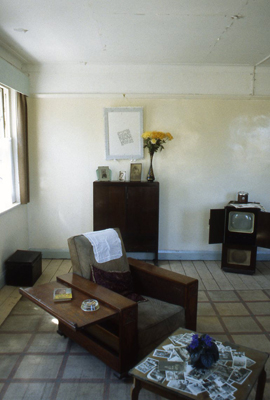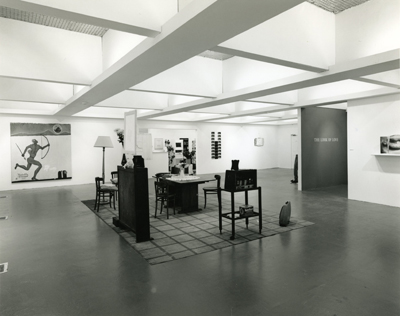The Look of Love
- The Look of Love - Press release
- The Silence of Love – Jean-Paul Martinon
- Here’s Looking at You – Peter Cross
- Today I Saw a Computer Lying Dormant – Patricia Scanlan
Rear Window Publications
1997 ISBN 0 9521040 7 5
© Peter Cross
Sometimes, we see lovers who look similar. They share a look, skull shape, eyes, or nose. Perhaps their closeness has created a unity, a homogeneity. Other lovers complement light with dark, they seem opposite, a passionate dialectic of difference. Either way, whether the loved one reflects us back or embodies what we are not, we look at them in a state of hypnosis, of constantly suspended disbelief. What we look for can never be found. We must keep on looking.
Looking becomes an erotic act. We can possess our loved one with a look as surely as if we grasped them firmly in our hands. We can do more: we can heighten their appearance onto a superstitious level—suddenly, they can look uncanny, different from everyone else.
Falling in love, we start on a journey of looking and seeing (marking the difference) the loved one. The journey can last a weekend or a whole life. Our loved one seems beautiful, unique, enchanted (the real meaning of glamour). It doesn’t matter that they aren’t good looking; in fact, it is precisely what is awkward, specific, or characteristic that gives us our guarantee that we have transcended the banal conventions of beauty into a level of perfection that is exclusively ours. It is hidden from others. Only the one in love can see the depth of this mystery.
One look is never enough. The loved one must be looked at over and over: asleep, awake, amused, sad, at work, relaxing, eating, bathing, tired, in need, in ecstasy, etc. This list can never end, as long as it continues to serve our desire. Our gaze takes on different functions in different contexts, we become ethnographers, forensic scientists, pornographers, portraitists; we try to fix a dictionary to the endless manifestations of the lover’s appearance, “moody,” “cute,” “classic,” “shocked.” We become drunk with the power of looking, with our ability to pass through time, distance, otherness itself; our eyes can wrap the loved one in a new skin of recognition, affirmation.
Loving and looking are mutual and also exclusive. We can be jealous (I want to hide my love away). But putting loved one in “purdah” only points to another facet of our loving gaze; the longing for a relationship, an answer. The rest of the world has been angrily shit out. If we come to “understand” it, it is either subjectively, or at a distance, afterwards. Lover can never be negotiated.
It can be lonely. Where I the world? This fierce need for confirmation longs to close the loop of otherness into an eternal, exclusive present: rapture. It can be savage, bestial. Possession with a look can be like a rape. Everyone knows how cruel beauty can be. Naturally, it also inspires cruelty.
Narcissus and Echo, Mother and Child, the Mirror and the Breast. Our look can cast the glamour of a myth, a myth of two people. “To people whose problems don’t amount to a hill of beans in this crazy world.”(Humphrey Bogard (Rick Blaine) to Ingrid Bergman (Ilse Lund) in Casablanca, dir. Michael Curtis, Warner, 1942)





